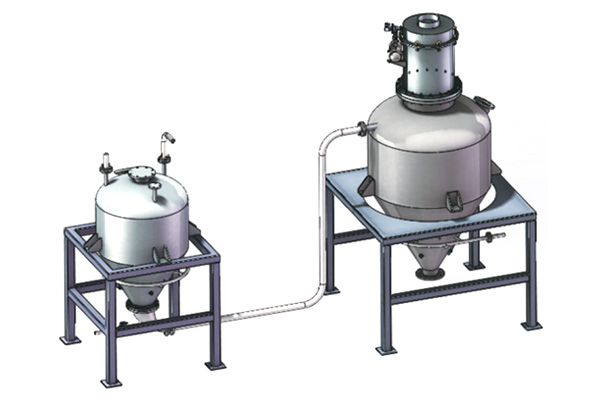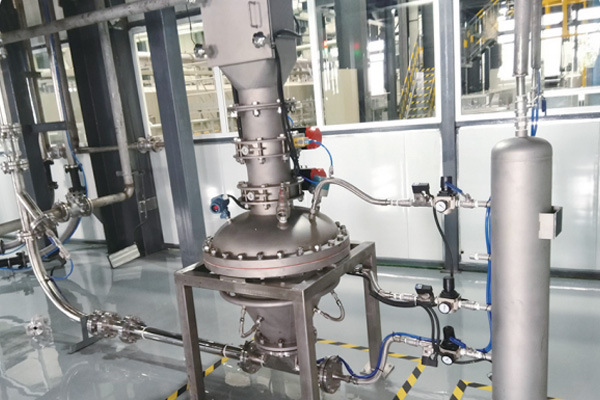Positive pressure conveying is the use of high-pressure gas to transport materials, with a gas source pressure of up to 0.7 MPa. Its characteristics are low air volume and high solid gas ratio, and the material moves in a fluidized or plunger like state inside the pipe. Large conveying capacity and long conveying distance.
Positive pressure conveying is divided into tank conveying and rotary valve conveying. Sending tank transportation is achieved by pressurizing the sending tank to a certain pressure and using a switching discharge valve and an air knife to distribute the material (the material is in a plunger state in the pipeline). This type of conveying has a lower airflow velocity and a higher solid gas ratio, resulting in a higher conveying gas pressure. Air or nitrogen is often used for gas transportation, and the power is generally provided by a compressor. The main feature is low conveying speed, which has little impact on material quality. The rotary valve dense phase conveying adopts the dilute phase positive pressure conveying method, while the power is provided by the compressor. The system has high pressure and low flow rate, but has a large conveying capacity and almost no impact on the material.
- Eliminate dust pollution to the environment, minimize environmental and personnel contact with materials as much as possible, and effectively improve the cleanliness of products;
- Using pipeline transportation, it occupies a small space and can complete material transportation in a narrow space, making the working environment beautiful and elegant;
- Equipment installation is not limited by distance or environment, and is the preferred method for the vast majority of material transportation;
- The equipment operates with low energy consumption and minimal damage to the transported materials;
- Automated process human-machine interface operation reduces the professional skill requirements for operators.
| Size(MM) | Working pressure(MPa) | Compressed air consumption(NL/min) | Conveying capacity(L/H) | Hopper capacity (L) |
| 1720*850*2350 | 0.4~0.6 | 280 | >2000 | 100 |
| Non standard customization is possible | ||||

 中
中



 189-3996-8601
189-3996-8601 Online consultation
Online consultation